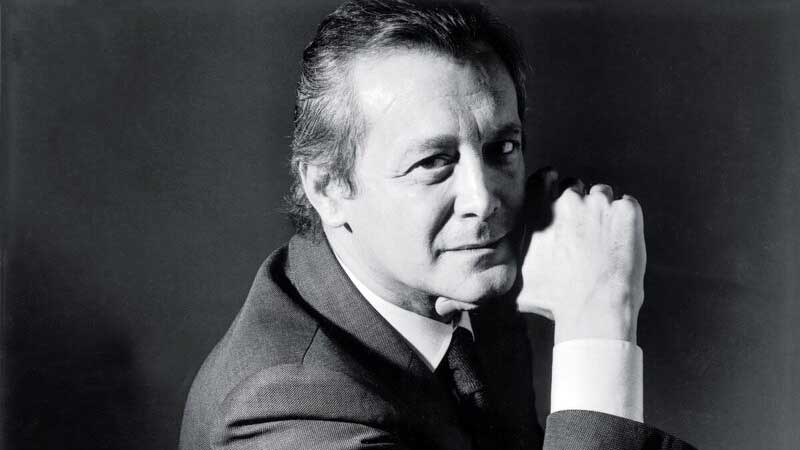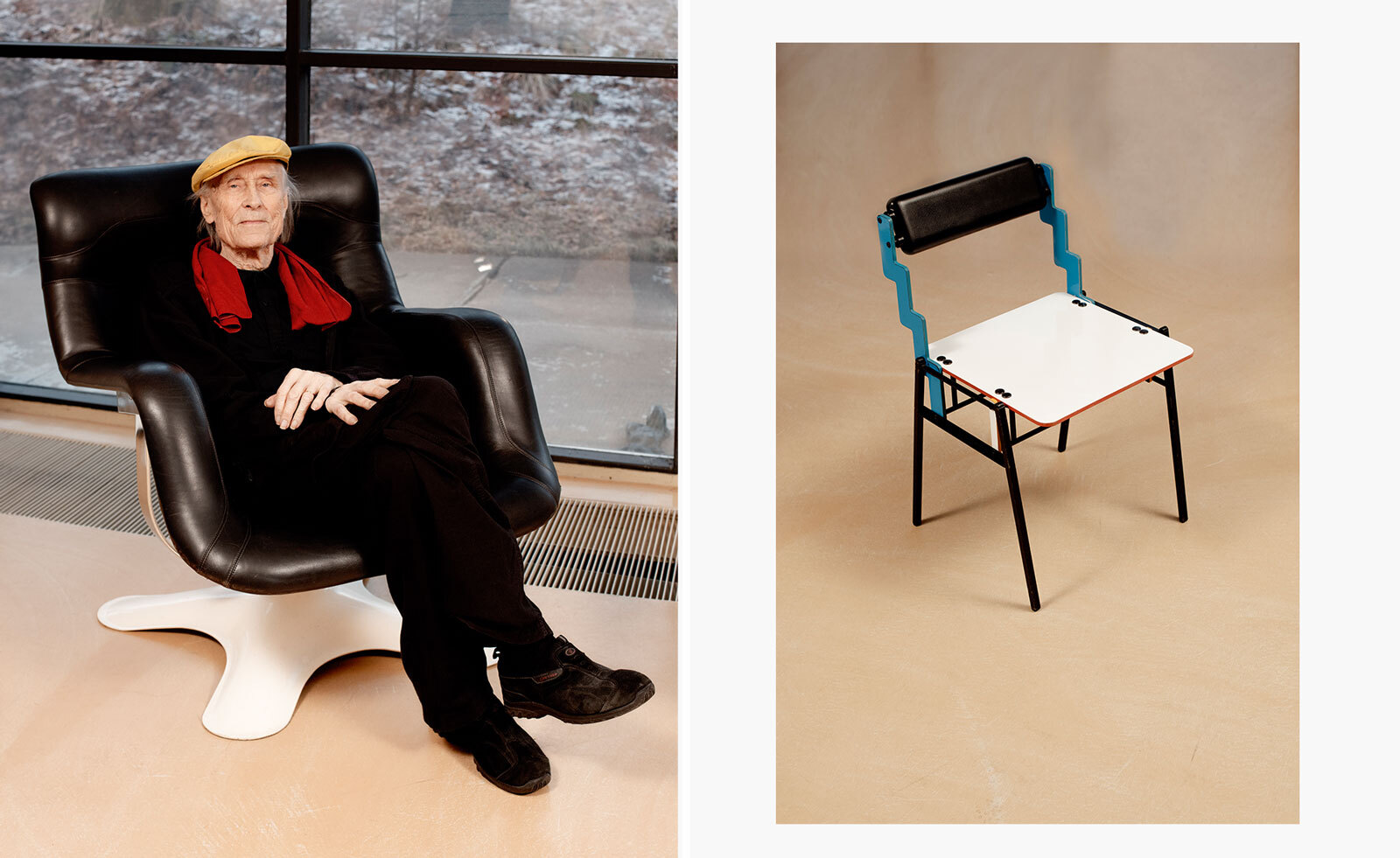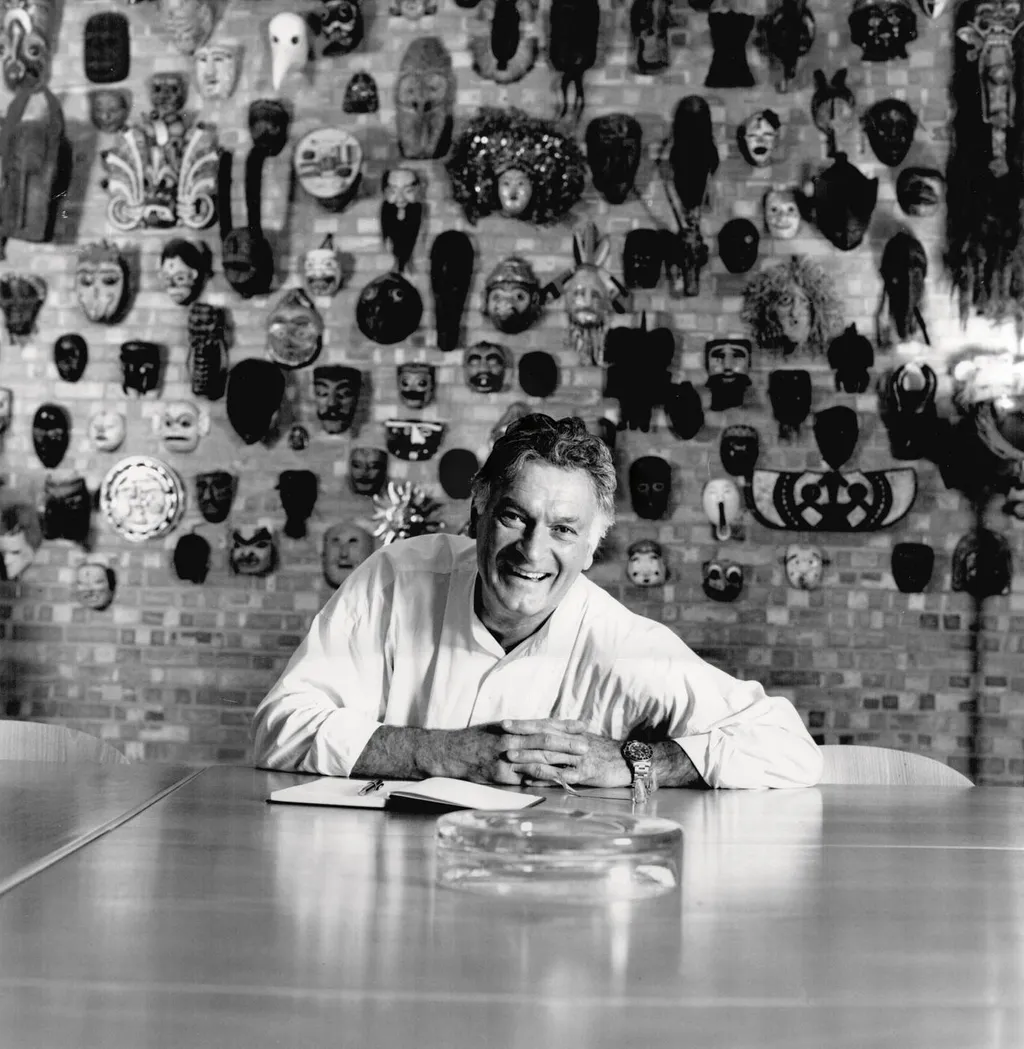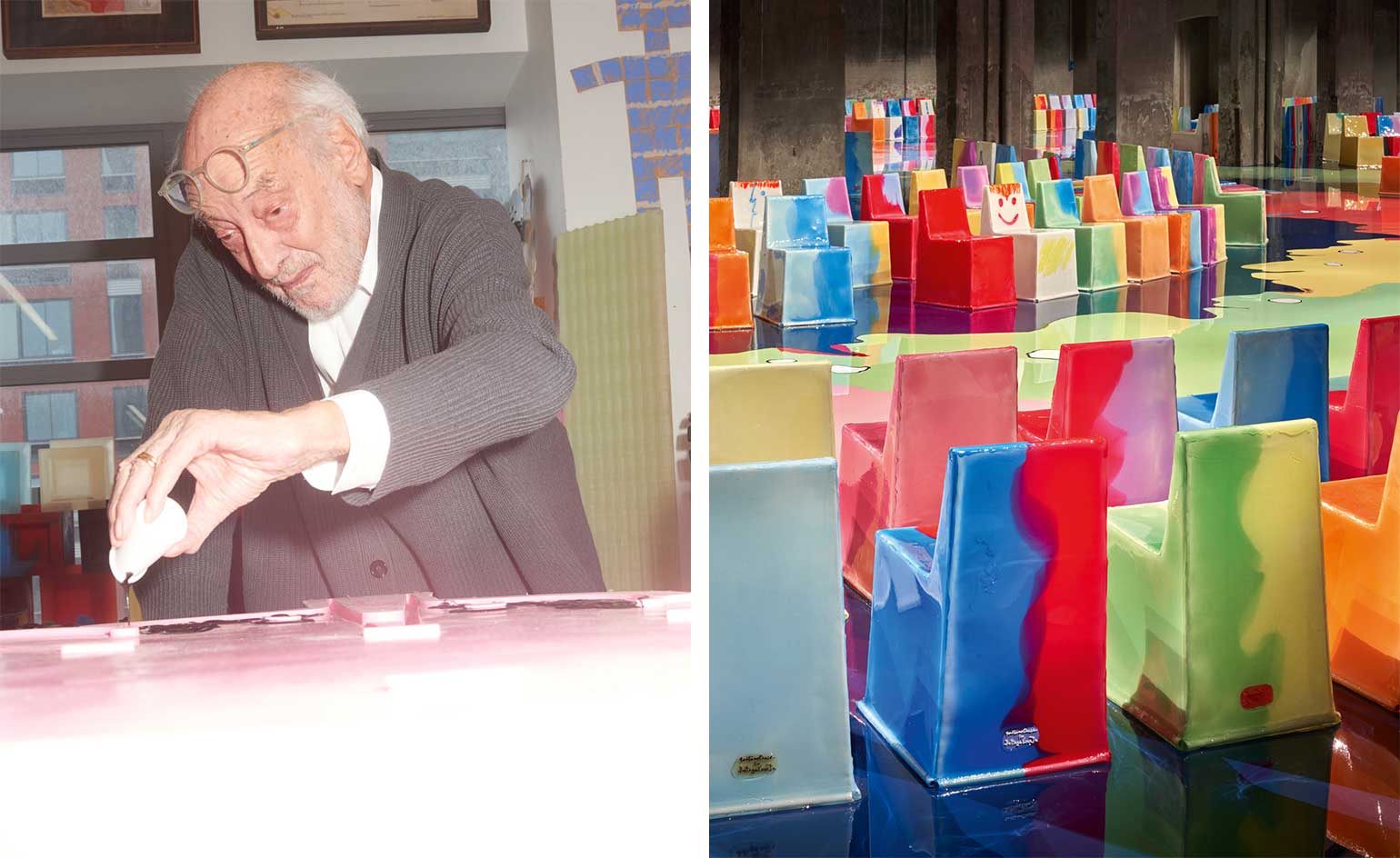In memoriam: Pierluigi Cerri (1939 – 2022)
We remember Italian architect and designer Pierluigi Cerri, who died on 29 November 2022 aged 83

Pierluigi Cerri passed away on Tuesday 29 November at age 83. The Italian architect, designer, curator, editor, academic and three-time Compasso d’Oro laureate was a polymath and a visionary: his work spanned from design to fashion, from exhibition curation to architecture, leaving an everlasting mark on the contemporary creative industries. Cerri created some of the most iconic visuals of our times by interpreting ideas into functional objects and refined graphics.
Pierluigi Cerri: ‘I’m interested in forms that survive history’

‘Ouverture’ sofa for Poltrona Frau, 1982
Architect and urban planner Stefano Boeri paid his respects through an Instagram post: ‘Pierluigi Cerri has left us. He had the rare gift of elegance, which in graphic design means translating concepts and ideas into clear, composed signs; endowed with a grace that seems innate.’
Born in 1939, Cerri belonged to the generation who has made and continues to make the history of architecture and design. Among his friends was Renzo Piano, who, in an interview, described Cerri as ‘a shy boy, with a slight note of ennui, of boredom, in his eyes. As if the fundamental feeling towards life should be to watch it.’ Cerri commented on his years at the Politecnico as a time when he and his peers learnt and watched, absorbing life and its lessons.

Naòs table for UniFor, part of a collection including a range of shapes and sizes
From the beginning of his career as a founding member of Gregotti Associati in 1974, Cerri was fascinated by smaller projects. He was after beauty, perfection even, and this was a restless quest that could not wait decades to come to fruition. ‘I am too anxious to engage in long-lasting “wars”. Waiting 20 years to see the realisation of a project would drive me to anxiety,’ confessed the architect.
The separation from Gregotti was natural, organic – ‘After all, already in the years when we worked together, it was as if another studio had evolved: mine, aimed less at large-scale architecture. While [Vittorio Gregotti] was designing the Bicocca, I was oriented towards interior design, small-scale architecture.’ Cerri focused not only on smaller architectural commissions but also on product and visual design. While creating forward-looking furniture for some of the most prominent design companies such as UniFor, B&B Italia, Fontana Arte, Arflex, Molteni&C, and Poltrona Frau (which most recently reissued his ‘Ouverture’ sofa), Cerri gave shape to elegant objects with a purpose.

Pierluigi Cerri's logo design for Salone del Mobile
Among his most renowned graphic projects are the visual identity of the Venice Biennale in 1976 and the creation of Prada America’s Cup corporate identity – the iconic and effortless red line – but also the the corporate identities of Salone del Mobile, MART Museum of Contemporary Art of Trento and Rovereto, Triennale di Milano, and many others.
A figure with a distinctive graphic signature and creative intuition, Cerri was also heavily involved in publishing as he created graphics for leading publishing houses, such as Electa, Einaudi, Bollati Boringhieri, Bompiani, Skira and La Nave di Teseo. He also curated and directed magazines including Casabella and Rassegna and he won several competitions and awards – including the Compasso d’Oro in 1995, 2001 and 2004.
Receive our daily digest of inspiration, escapism and design stories from around the world direct to your inbox.
Restless and visionary, Cerri was constantly on a quest for perfection. Still, his vast and eclectic remit allowed him to experiment and excel in numerous fields, capturing the beauty of design and architecture of his time. Perfection is impossible to achieve, but Cerri’s objects, graphics and legacy are timeless, eternal – and we’d say almost perfect. As he once revealed in an interview, ‘I’m interested in forms that survive history.’
Maria Cristina Didero is an independent design curator, consultant and author, who has contributed to many publications over the years. Didero has consulted for companies such as Vitra, Fritz Hansen, Lexus, Fendi, Louis Vuitton, Valextra among others. Based in Milan, she works internationally, curating exhibitions for institutions: some of her most recent projects include Nendo: The Space in Between and The Conversation Show at the Holon Design Museum, Israel; FUN HOUSE by Snarkitecture at National Building Museum, Washington D.C.; SuperDesign a project about Italian radical design, NY; Vegan Design, or the Art of Reduction by Erez Nevi and The Fish and The Crowd by Carlo Massoud, Milan. In April 2022 she curated a Mathieu Lehanneur exhibition at the Triennale in Milan called The Inventory of Life, while in July she debuted a project at the MK&G in Hamburg titled Ask Me if I Believe in the Future, alongside a series of ongoing collaborations. She was appointed 2022 Curatorial Director of Design Miami/. She is currently preparing two projects for Milan Design Week 2023.
-
 Curvilinear futurism meets subtropical beaches at Not A Hotel’s ZHA-designed Okinawa retreat
Curvilinear futurism meets subtropical beaches at Not A Hotel’s ZHA-designed Okinawa retreatZaha Hadid Architects has revealed the design for the first property in Not A Hotel’s futuristic new Vertex collection, coming soon to southern Japan
-
 Gorden Wagener leaves the helm of Mercedes-Benz design after 28 years with the company
Gorden Wagener leaves the helm of Mercedes-Benz design after 28 years with the companyThe German designer is stepping down from the role of chief design officer at Mercedes-Benz. We look back at his influence and impact on the world of automotive and luxury design
-
 These Christmas cards sent by 20th-century architects tell their own stories
These Christmas cards sent by 20th-century architects tell their own storiesHandcrafted holiday greetings reveal the personal side of architecture and design legends such as Charles and Ray Eames, Frank Lloyd Wright and Ludwig Mies van der Rohe
-
 Remembering Yrjö Kukkapuro, Finnish grand master of design (1933-2025)
Remembering Yrjö Kukkapuro, Finnish grand master of design (1933-2025)Almost everyone in Finland has sat in a chair by designer Yrjö Kukkapuro, writes Wallpaper’s Emma O'Kelly, who met him at his studio in 2020 and here pays tribute to a design legend
-
 We remember Kenneth Grange, the British industrial designer, who has died aged 95
We remember Kenneth Grange, the British industrial designer, who has died aged 95Kenneth Grange was a colossus of post-war design. With a career spanning six decades, his mission for improvement touched everything from trains to fountain pens, taxis to toothbrushes
-
 Design world mourns Gaetano Pesce (1939-2024), the ‘most radical of radicals’
Design world mourns Gaetano Pesce (1939-2024), the ‘most radical of radicals’We remember Gaetano Pesce, the rule-breaking Italian design visionary, who has died in New York aged 84
-
 In memoriam: celebrating the lives and work of those we lost in 2023
In memoriam: celebrating the lives and work of those we lost in 2023We honour and remember some of the influential creatives lost during 2023, through the Wallpaper* tributes that ran throughout the year
-
 In Memoriam: Maria Pergay (1930 – 2023)
In Memoriam: Maria Pergay (1930 – 2023)We remember design dame Maria Pergay, who died on 31 October 2023 aged 93
-
 In Memoriam: Andrea Branzi (1938 – 2023)
In Memoriam: Andrea Branzi (1938 – 2023)We remember Italian design radical Andrea Branzi, who died on 9 October 2023
-
 In Memoriam: Rodolfo Dordoni (1954 - 2023)
In Memoriam: Rodolfo Dordoni (1954 - 2023)We remember Italian designer and architect Rodolfo Dordoni, who died on 1 August 2023
-
 In memoriam: Thomas Eyck (1964 – 2023)
In memoriam: Thomas Eyck (1964 – 2023)We remember Dutch design entrepreneur Thomas Eyck, a champion of craft, materiality and beauty who helped elevate many of the Netherlands’ contemporary design stars